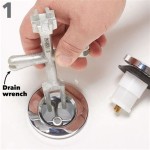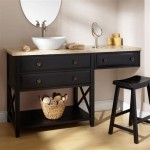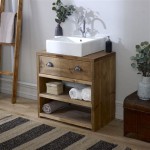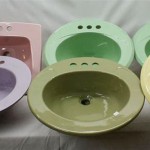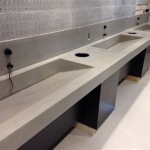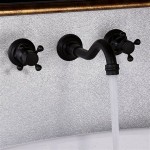How To Reface Bathroom Vanity Doors
Refacing bathroom vanity doors offers a cost-effective way to update a bathroom's appearance without a full remodel. This process involves changing the exterior surface of the doors while retaining the existing cabinet structure. Several methods can achieve this, each offering varying levels of complexity and cost.
One popular method involves applying a new veneer over the existing door surface. Veneer options include wood, laminate, and thermoplastic. This method requires careful surface preparation. The doors must be thoroughly cleaned and sanded to ensure proper adhesion of the new veneer. Loose or damaged areas should be repaired before applying the veneer. Precise measurements and cutting are crucial for a professional-looking finish.
Another refacing option is painting the existing doors. This method is generally the most budget-friendly and offers significant design flexibility through color choices. Proper preparation is essential for successful painting. The doors should be removed from the cabinet frame, cleaned, and lightly sanded to create a surface that will accept the paint. A primer coat should be applied before the final paint coats to ensure even color and durability. High-quality paint formulated for cabinets is recommended for its resistance to moisture and wear.
Replacing the doors entirely with new ones is another viable option. This provides the most dramatic transformation and allows for a complete change in style and material. Accurate measurements of the existing doors are essential when ordering replacements. New doors can be purchased pre-finished or unfinished, allowing for customization through painting or staining. Installing the new doors typically involves attaching hinges and handles, a relatively straightforward process for those with basic DIY skills.
Thermofoil offers a unique refacing solution. This material is a thin, heat-activated vinyl film applied to the surface of the doors. It comes in a wide variety of colors and patterns, mimicking the look of wood or other materials. Applying thermofoil requires specialized equipment and skills, making it a less common DIY project. Professional installation is often recommended for optimal results.
Before beginning any refacing project, gathering the necessary tools and materials is crucial. Commonly required tools include screwdrivers, measuring tape, sandpaper, safety glasses, and a utility knife. Specific materials will depend on the chosen refacing method, but may include veneer, adhesive, paint, primer, hinges, handles, and cleaning supplies. Having everything readily available streamlines the process and minimizes potential delays.
Careful consideration of the existing cabinet condition is essential before starting. If the cabinet boxes are damaged or significantly deteriorated, refacing the doors alone may not be sufficient. Assessing the structural integrity of the cabinet boxes is vital to determine if a full cabinet replacement is more appropriate. Addressing any underlying structural issues will ensure the longevity and functionality of the vanity.
Removing the existing doors is typically the first step in the refacing process. This involves carefully unscrewing the hinges that attach the doors to the cabinet frame. Labeling each door and its corresponding hinge location can simplify reinstallation. Keeping track of the hardware ensures that everything is returned to its correct position, maintaining proper alignment and functionality.
Surface preparation is a critical step regardless of the refacing method chosen. This involves cleaning the doors thoroughly to remove any grease, dirt, or grime. Sanding the surfaces lightly creates a better surface for adhesion, whether applying veneer, paint, or thermofoil. Proper surface preparation contributes significantly to the overall quality and durability of the finished product.
Applying the chosen refacing material requires precision and attention to detail. Whether working with veneer, paint, or thermofoil, following manufacturer instructions is crucial for optimal results. Taking the time to apply the material carefully and evenly will ensure a professional-looking finish that enhances the aesthetic appeal of the bathroom.
Reinstalling the refaced doors is the final step in the process. This typically involves reattaching the hinges and handles. Ensuring proper alignment of the doors is essential for smooth operation and a seamless appearance. Taking the time to adjust the hinges as needed will ensure the doors hang correctly and function optimally.
Refacing bathroom vanity doors offers a significant return on investment in terms of both aesthetic improvement and increased property value. By carefully considering the available options and following proper procedures, homeowners can achieve a refreshed bathroom look without the expense and disruption of a full renovation.

Fluted Bathroom Cabinet Refacing Diy At Home With Ashley

4 Tips For Refacing Bathroom Vanity Doors Cabinet Now

Fluted Bathroom Cabinet Refacing Diy At Home With Ashley

Conquer Your Vanity Bathroom Cabinets Diy Cabinet Makeover

How To Reface A Bathroom Vanity Cabinet Dowelmax

Diy Cabinet Refacing Reface Supplies

How To Reface A Bathroom Vanity Cabinet Dowelmax

Bathrooms Refacing Kitchen Cabinets Bathroom Diy Vanity

Fluted Bathroom Cabinet Refacing Diy At Home With Ashley

4 Tips For Refacing Bathroom Vanity Doors Cabinet Now
Related Posts


